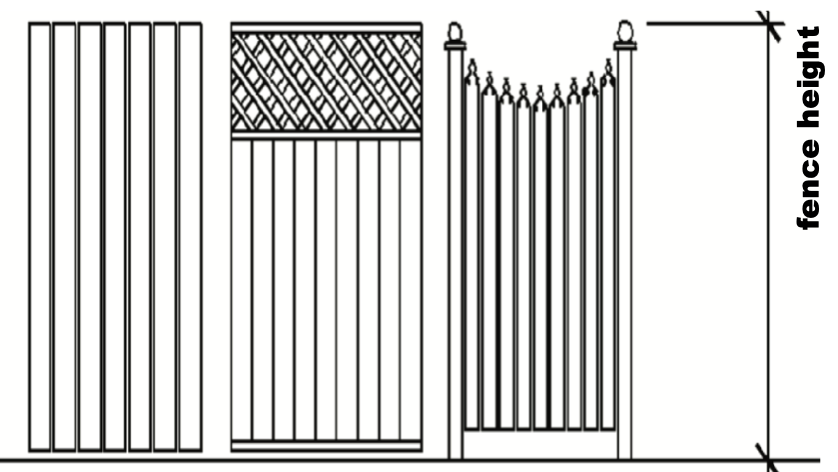- adding an accessory building, equipment room, shed or detached garage
- additions or alterations to attached garages
- additions or alterations to existing buildings
- building or altering a deck
- building a gazebo
- building a new secondary suite
- building a ramp
- building, installing or altering a permanent sign
- changing a buildings use
- construction of a new building
- creating new rooms or spaces within an existing building, including non-structural work
- demolishing a building or part of a building
- finishing a basement, including non-structural work
- installing, extending, altering or repairing plumbing systems
- installing, repairing or replacing weeping tile
- installing wood burning appliances
- legalizing an existing secondary suite
- moving or relocating any building including mobile or modular structures
- restoration, maintenance or repair of a building's structural components and systems
- reconstruction of any building that has been damaged by fire, flood or any other natural disaster
- upgrading an existing building
Building and Renovating
The Development Services Department oversees building and renovating within the City of Dawson Creek. All construction projects must adhere to the current BC Building Code and our Building Regulation Bylaw. The Zoning Bylaw and the Official Community Plan regulate the types of projects and land use within the city.
Apply for a Permit
You may need a permit for construction projects on your property.
Examples of when you need a permit
Examples of when you do not need a permit
- fencing
- flooring
- flower beds and boxes
- painting
- replacing doors and windows of the same size
- re-shingling or replacing roof cladding
- sheds under 10m2 (108 ft2)
- siding
- trim
If you are unsure if you need a permit, contact Building Inspection by email at buildinginspection@dawsoncreek.ca.
Building a fence
You do not need a permit to build a fence. However, you do need to follow the rules listed in section 5.12 of our Zoning Bylaw. You also need to call BC 1 Call and DigShaw before starting to locate any necessary utilities.

- This means any fence, tree, or hedge within 8m (26ft 3in) of the pavement edge cannot be taller than 1m (3ft 3in) above the pavement of the road.
- Trim branches of trees or shrubs back from the ground level up to a height of 3m (10ft) so they do not hang in this area.
Definitions of Zoning Bylaw terms
The definitions below are worded in simple terms that are different from our Zoning Bylaw, making every effort to match them as closely as possible. Therefore, our Zoning Bylaw will come before these definitions if there is a discrepancy.
 "Front Parcel Line" is the edge of a property next to a public road. Unless it is a corner property, the front parcel line is the shortest property line (when compared to the other sides) next to the public road.
"Front Parcel Line" is the edge of a property next to a public road. Unless it is a corner property, the front parcel line is the shortest property line (when compared to the other sides) next to the public road.- "Yard, Side" is the part of the site from the front yard to the rear yard between the side parcel line and the closest side of the main building.
- "Side Parcel Line" is a property line other than the front or rear property lines.
- "Front Building Line" is a line drawn across the property from the furthest point of a main building to the front property line.
- "Yard, Rear" is the part of the site between the rear property line and the rear of the main building, across the full width of the site.
- "Rear Parcel Line" is the boundary of a property opposite of the Front Parcel Line. It does not intersect the front parcel line.
Measure the height of your fence from the ground right next to your fence to the highest point of your fence. If you are building on top of a retaining wall, measure from the bottom of the wall to the highest point of your fence.

- For a residential lot, a fence must not be taller than:
- "Front Yard" is the front wall of your house to your front property line. The maximum height is 1.2m (4ft)
- "Side Yard" is the wide wall of your house to your side property line. The maximum height is 1.8m (6ft)
- "Rear Yard" is the rear wall of your house to your rear property line. The maximum height is 1.8m (6ft)
Your fence must be located on your property. It cannot be on City property, or any city right-of-way or easement areas.
- Sometimes neighbours decide to share a fence. We have no jurisdiction in disputes over shared fences. These matters fall within provincial jurisdiction and can be resolved through civil litigation.
- To locate your property line or pins, hire a registered BC Land Surveyor (BCLS) to come to your property and find your property corners. It is your responsibility to find the accurate location of your property lines.
Our Zoning Bylaw outlines the zoning for all of the properties in Dawson Creek. Use our zoning map, or contact our Engineering Department at City Hall for help.
Contact Us
The City of Dawson Creek
10105 - 12A Street
City of Dawson Creek, BC V1G 3V7
Telephone: 250-784-3600
